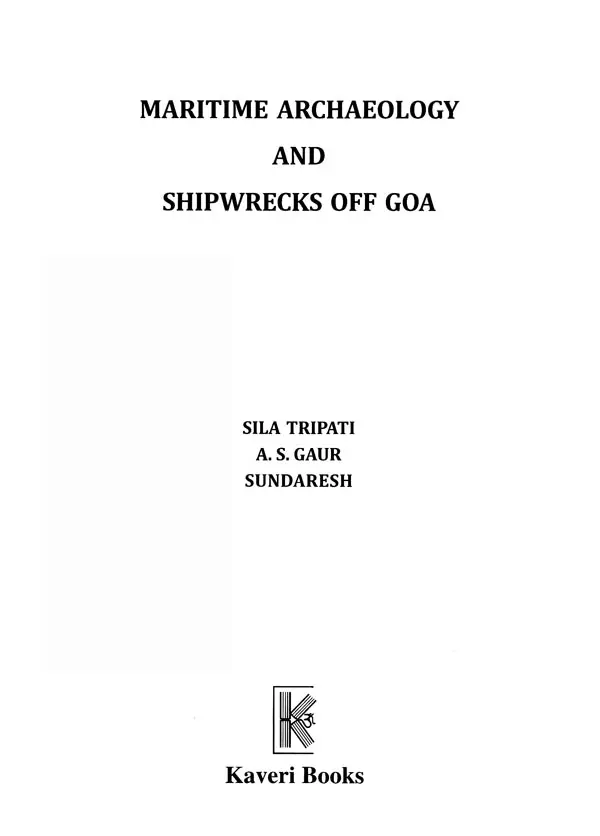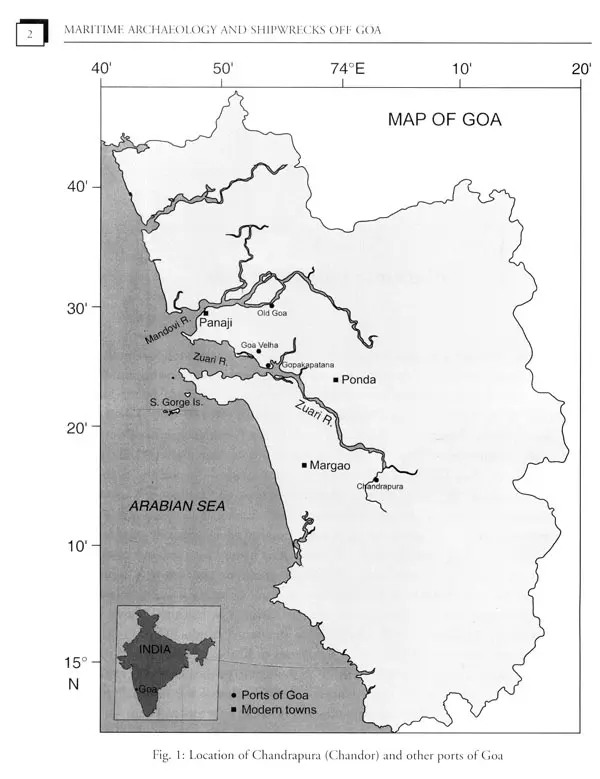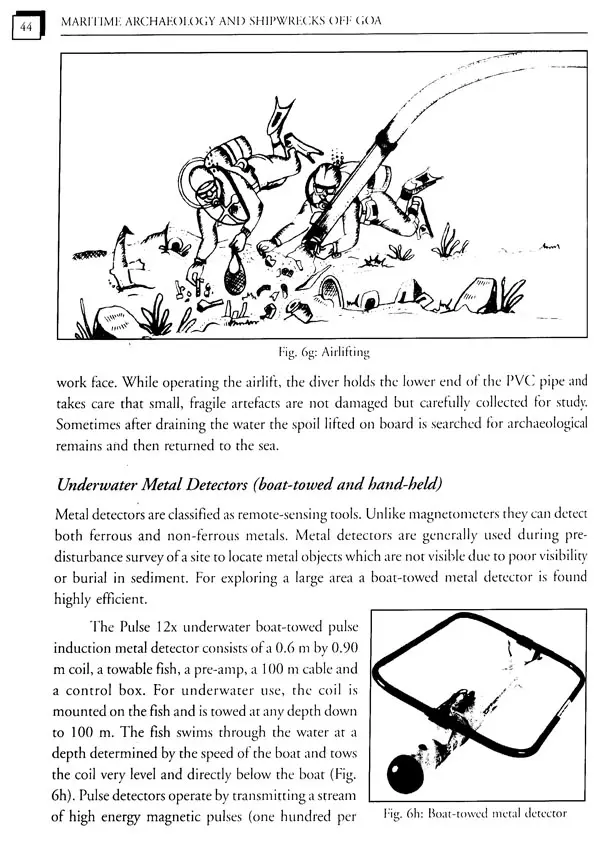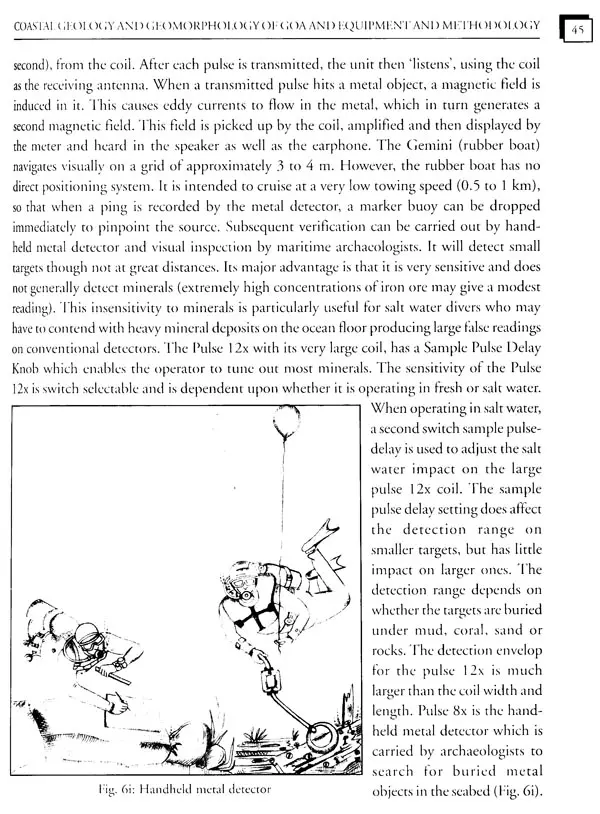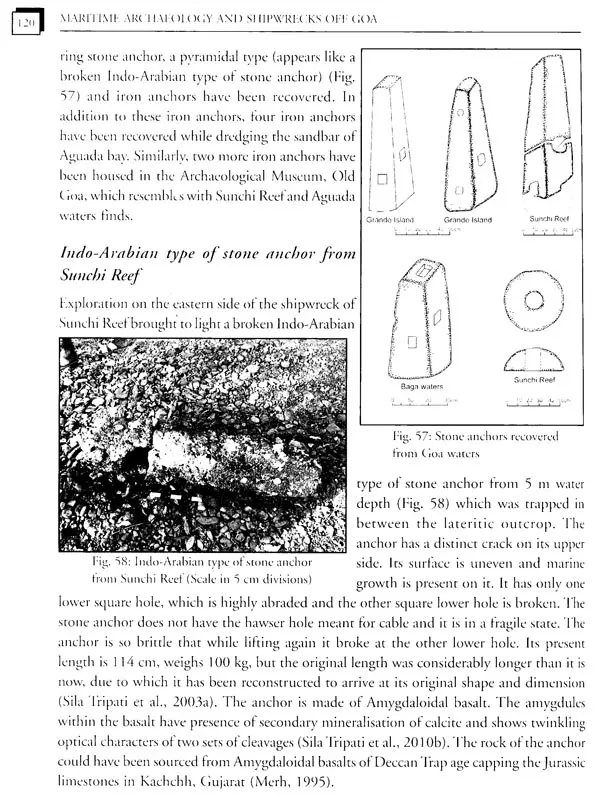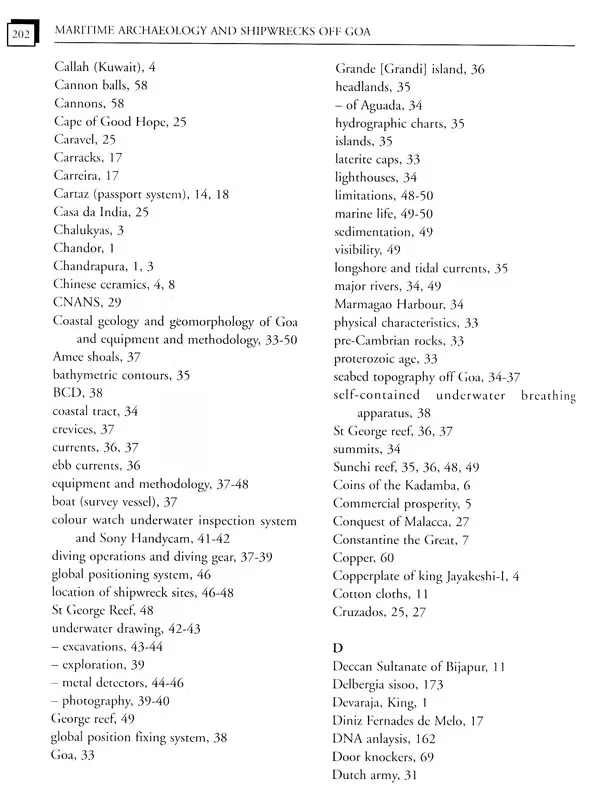
Maritime Archaeology and Shipwrecks Off Goa
Book Specification
| Item Code: | UAM537 |
| Author: | Sila Tripati, A.S. Gaur and Sundaresh |
| Publisher: | Kaveri Books |
| Language: | English |
| Edition: | 2014 |
| ISBN: | 9788174791405 |
| Pages: | 222 (Throughout B/w Illustrations) |
| Cover: | HARDCOVER |
| Other Details | 10.00 X 7.50 inch |
| Weight | 770 gm |
Book Description
In order reconstruct the maritime history of Goa both onshore and offshore explorations have been carried out and the present work is the outcome of the exploration. Moreover, it was this reason that the first shipwreck exploration Indian waters was carried out in Goa waters. In course of underwater exploration, shipwrecks have been found off Sunchi Reef, Georges' Reef and Amee Shoals, Sail Rock and Grande Island. The Sunchi Reef shipwreck the oldest wreck so far surveyed in Indian waters and the first Portuguese wreck until now investigated. Coastal Geomorphology and Seabed topography of Goa has recorded while studies. In addition to shipwrecks, stone anchors documented in waters and Chandor, Gopakapatana and Goa, the sites have explored. In separate chapters, a comprehensive report of analysis elephant tusks hippopotamus teeth recovered from Sunchi shipwreck and anatomical analysis of wooden stocks of anchors retrieved Aguada bay have been included. The gives comprehensive account rich maritime heritage and illustrated with both and underwater photographs, drawings and tables, and undoubtedly fascinate, enhance the knowledge scholars and researchers and provide them with insight into maritime heritage of Goa.
Gaur (1965) working the CSIR-National Institute Oceanography, Goa 1988, undertaken extensive research in field Marine Archaeology and important projects include the underwater explorations at Dwarka, Bet Dwarka, Somnath, Kodinar, Ghogha Gujarat coast many other sites along Indian coast. has authored Harappan Maritime Legacies Gujarat (2000) and authored three Archaeology Dwarka (2005), Underwater Archaeology Dwarka and Somnath (2008) Maritime Archaeology around number research papers.
Sundaresh (1964) joined CSIR-National Institute of Oceanography, Goa in 1989 as Technical officer (Marine Archaeologist). more than papers published National credit. He has authored two books. has presented research papers in National and International Conferences member 6 prestigious professional bodies as life member and Honourable Treasurer Society for Marine Archaeology, Goa.
This book on underwater exploration off Goa provides hand information and analyses artefacts that were recovered from the shipwrecks.
Literary sources, archaeological discoveries, iconographic and epigraphic evidences and accounts of travellers allude to trade and commerce, overseas cultural contacts, and problems faced by mariners and seamen and shipwrecks in India. In order to corroborate the descriptions in literary sources, epigraphical evidences and accounts of travellers, land and underwater exploration are highly necessary. Maritime archaeological exploration and excavation have been carried out along the Indian coast since the inception of the Marine Archaeology Centre at the National Institute of Oceanography (NIO), a constituent laboratory of the Council of Scientific and Industrial Research (CSIR), Goa. In the last three decades significant achievements have been made in maritime archaeological research in India.
Book's Contents and Sample Pages
